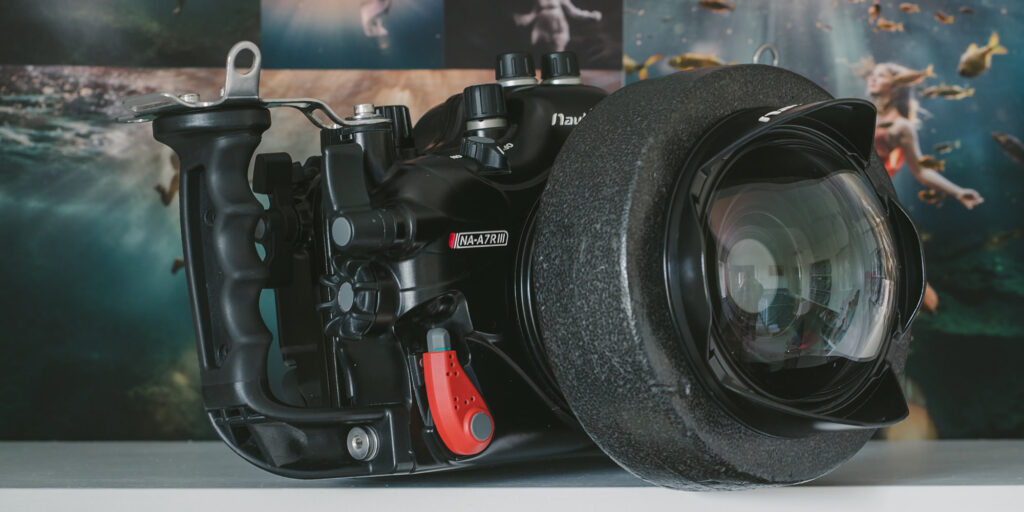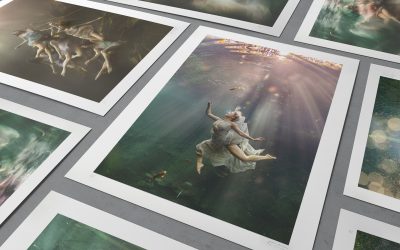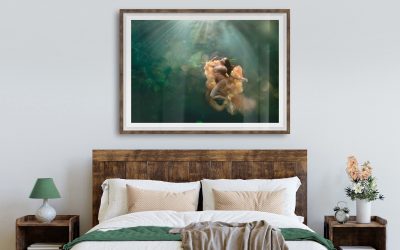A guide to the equipment I use for my underwater photography by Lexi Laine

A typical shoot day packing pile
The most frequently asked question I receive from other photographers is what gear do I use. A lot of the time I’m asked this question from people who don’t currently do underwater photography but tell me that they have always wanted to give it a try. And my answer is always the same… Do it! It’s the most incredible outlet for my creativity I’ve discovered and I’m always encouraging of people who want to learn this wonderful genre of photography.
Because I receive several messages a week asking this question I thought it was about time that I wrote a blog post on the subject. There are loads of topics to do with my work that I’d love to write about so this is where I’ll begin. The techy, nerdy, beautifully designed tools that allow me to make my art.
To put it very basically: I shoot with a mirrorless camera inside an underwater housing. There are a thousand different combinations of camera, lens, housing that you can choose from but I’ll go ahead and tell you mine.

Sony A7Riii + 50mm Sony Zeiss Planer f1.4, Sony A7iii + 28mm f2
First off I’ll talk about the camera. I’ve found that using mirrorless cameras underwater has great advantages over DSLR systems mainly because of the technology they use to focus. With mirrorless cameras you can use the rear screen to compose and shoot whereas with DSLRs there is a small focus delay when doing so. When underwater wearing a mask, obviously it’s much clearer to see what you’re doing when using a rear screen rather than peering through a viewfinder. Once I made the decision to switch to a mirrorless system, I did a lot of research and chose the market leader for these kinds of cameras. I made the switch to Sony in 2018 and honestly it’s the best decision I’ve ever made around equipment choices. I currently use a Sony A7RIII which is full frame and has a 42.4 mp sensor so it means I can make absolutely huge prints without any worries of loss of quality. As well as the large file size, the main reason why I chose this camera is for Sony’s focusing system. I had heard good things about it and my first Sony camera I bought was the A7iii when it was launched in the uk in March 2018. I was blown away by how quick this was to focus and how rarely (if ever) it missed focus. To the point of even if you try to challenge the technology and try to make it miss focus, it wont. Features like the face detection and eye AF are total game changers for me. For those of you who don’t know how I work, I am a freediving underwater photographer so each submersion is time critical. I train to extend the amount of time that I can hold my breath but having equipment that works first time without any delays is obviously super important to me. And having a camera that nails focus means that I know that I won’t miss any never to be repeated moments.

Nauticam NA-A7Riii + N100 flat port 32
Lens wise, I’ve tried various focal lengths over my years of shooting underwater and my overall favourite is the Sony 28mm f2 lens combined with a wide wet lens. This leads me on to talk about housings… I use (and always have done) Nauticam housings. Each housing is designed specifically for each camera and they make them for scores of different models. They are really reliable and robust – made out of aluminum. The model I use is the NA-A7RIII and luckily for me it fits both my A7iii and A7Riii cameras. One of the many things I love about this housing is the vacuum and alarm system. The vacuum system allows the user to remove the air from inside the housing, using a small hand pump, thus creating a vacuum. There is a light on the back of the housing which turns from red to green when the housing is vacuum sealed. If for any reason the vacuum is compromised then the light would start flashing and alert the user. In around six years that I’ve used these housings, the vacuum has never failed so it’s so reassuring of the quality here. Secondly, there is also a detector inside the bottom of the housing that makes an audible beeping sound should water breach the case. So double reassurances basically!
And the final part of the setup is the port. A port connects to the front of the housing and allows space for whichever lens you use. Dome ports are commonly used with a lot of lenses but my setup is a bit different. I use a flat port combined with Nauticam’s Wide Wet Lens (WWL-1) This is the highest quality wet-changeable underwater wide-angle conversion optic ever made (to date) and means that I get incredible clarity and edge sharpness which is often a problem with other lens/port setups. And as it’s a wet lens, it means I can remove it during a shoot if I want to do more close up shots without the extreme wide angle.

Nauticam NA-A7Riii + N100 flat port 32 + Wide Wet Lens (WWL-1)
I have found this combination of tools works brilliantly for me and whilst I’m always keeping an eye out for new releases of cameras/lenses etc, I’m sticking with what I’ve got for now! I’ll update this post if that changes any time soon.
A final note to say that I realise that I haven’t talked at all about lighting. Largely these days I shoot outdoors and mainly with natural light where possible. I do use artificial lighting occasionally and have over the years tried various different setups but I think this subject probably warrants a post of its own.





0 Comments